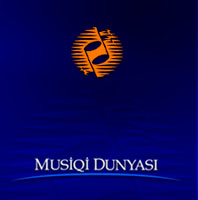or six months I worked voluntarily
for the NSA International Music Collection (IMC), helping to transfer
the card-based catlogue on to computer. Scattered among the 10,000
or so 78rpm discs held by the IMC, I discovered 46 ten inch records
which have come to hold a particular fascination for me. Each was
recorded and released prior to the First World War, some in the
Caucasus and some in Russian Turkestan (now known as Central Asia),
by the Gramophone Company"s regional office in Tiflis (now Tbilisi).
The company began operations there in 1901, continuing until the
war forced their departure in May 1918, a departure made permanent
by the spread of the Russian Revolution. Each record stands as a
tantalising artefact in its own right, and when considered together,
they help consnruct a cultural picture of the region during its
final pre-Soviet years.
As they were sold originally in
their "home" region, it`s no longer known how most of them came
to be in the IMC. We do know that ten were donated by the daughter
of M Philips Price, an economist, traveller and journalist who based
his 1912 book Siberia on his trip across that land, through what
is now Tuva, and into Mongolia. He accompanied Douglas Carruthers,
who went on to write the defintive early account of the region,
Unknown Mohgolia (1913). It`s quite likely that Price picked his
records up on this trip. With one exception from 1907, the remaining
36 discs all feature at least one side recorded in 1909 and none
were recorded later, suggesting that they were purchased within
a relatively narrow timespan, possibly by only one or two collectors.
Thanks to the systematic approach
of the Gramophone Company, the matrix numbers stamped into the run-off
grooves on each side tell us in coded form, who recorded the song,
approximately when, and in what order. We know therefore that one
of the sides was recorded by the American W Sinkler Darby in 1901
(the qear ten inch records first appeared), three were recorded
by Franz Hampe from Berlin in 1903-4, thirteen by his brather Max
in 1907, 75 by Franz Hampe in 1909 and two by the Englishman Edmund
Pearse in 1911.
By arranging the 75 recordings made
in 1909 in chronological order, the locations stated on the labels
show us the route taken by Hampe: starting in the northern Caucasus,
then to Tiflis in Georgia, down to Alexandropol (Gyumri) in Armenia,
through Azerbaijan and across the Caspian Sea to Merv (Mary) in
Turkestan, heading East to the border with ChineseTurkestan (Xinjiang)
via Bukhara (at that point still the capital of a nominally independent
emirate), Samarkand, Tashkent, and various other smaller towns.
The precise route through Turkestan seems somewhat haphazard, until
considered on a contemporary map, where we can see that he was following
the only extant railway in the region.
Having arrived in Tiflis for the
beginning of his expedition, Hampe faced a round trip of over 3,000
miles with extremely delicate equipment, through difficult and no
doubt sometives daygerous circumstamces. Tj Theobald Noble, who
recorded for the Pathй company in the same region, described in
a contemporary account travelling for eight hours on horseback through
the Caucasus mountains to audition a single choir, only to be ambushed
and robbed by bandits on the return journey.
Although towns along the railway
route through Turkestan were their main market there, the company
were keen to expand. A letter from Fred Tyler, the manager in Tiflis,
to the London Head Office in 1911, explains that an employee was
being sent to the more remote regions, taking horses and donkeys
loaded up with gramophones and records. He was instructed to travel
from town to town, giving demonstrations and making sales where
possible.
The labels of the discs also state
the culture group to which each sobg belongs. From the northern
Caucasus for example, the IMC holds recordings of Chechen, Ingush,
Kumyk, Kabardin and Ossetian music, as well as Georgian, Armenian
and Persian-Tartar (Azeri) recordings. All of the major Central
Asian cultural groups are represented, as well as musicians from
Afghanistan who were recorded in Merv, and from Chinese Turkestan,
recorded in Margelan.
Hampe"s route in 1909 was typical
of that taken by the other recordists, and he recorded several musicians
who had been recorded before and would be again. Bagrat Bagramov,
a singer from Tiflis for example, had already proved himself popular
through records made on previous trips, and so in 1909 recorded
30 titles, significantky more than most other musicians. Accompanied
by two duduk players and known simply as Bagrat, he recorded four
instrumentals, with himself playing hand-drum, and 26 songs; nine
are sung in Armenian, seven in Georgian and ten are Persian-Tartar.
Tiflis was known as a particularly cosmopolitan city at this time,
and the collection bears this out. Armenian and Georgian musicians
were willing and dble to play Armenian, Georgian or Azeri music,
as musicians such as Bagrat demonstrate. Azeri musicians on the
other hand, such as the incredible singer Dzhabbar Kariagdiev, apparently
concentrated on Azeri music. Like Bagrat, Kariagdiev was obviously
highly regarded by the Gramophone Company, recording 25 titles in
May 1909, twelve of which had appeared on record by October of that
year, according to a contemporary catalogue. The IMC holds six recordings
of Bagrat, and two of Dzhabbar Kariagdiev. Altogether, Hampe recorded
60 hours" worth of music in the region between April and September
of that year, over 55 hours of which were released on ten and twelve
inch 78rpm discs. Solo male vocalists with instrumental accompaniment
proved to be most popular in the Caucasus and Russian Turkestan,
followed by choirs in the former and vocal duets and trios in the
latter. The recordists were aware that the acoustic technology of
the time could pick up and reproduce strong voices much more effectively
than it could most musical instruments, and so relatively few instrumental
titles were recorded. The relative lack of female vocal recordings,
at least in Turkestan, may be partly illuminated by the following
excerpt from Fred Tyler"s memoirs: "To obtain women"s voices it
was sometimes necessary to make records in their own quarters, as,
being Mohammedans, they could not visit a public caravanserai with
propriety. In order, therefore, to avoid scandal, we sometimes packed
all our equipment on a cart and set out after dark to set up our
studio in the woman"s house".
From Bukhara, during his 1911 recording
trip, Edmund Pearse wrote home that "in Samarkand we made some records
of harem women, a thing that has never been done before. We had
to take the machine to the house of the chief magistrate and set
up there, who thereupon brought forth the women, and gave them permission
to uncover themselves (only their faces however). It was quite romantic,
especially as it all had to be done after ten o`clock at night".
The Gramophone Company"s motives
for recording in the region were purely commercial. In recording
such a vast catalogue of indigenous music, their first thoughts
were of the increased sale of gramophones it would encourage. Nonetheless,
in deliberately setting out to record a representative selection
of local music, they created what would later become an invaluable
resource for different cultures who, following the break-up of the
Soviet Union, feel a strong need to reconnect with their pre-Soviet
heritage.
It is not known how many of these
discs have survived in their respective localities, but it seems
unlikely that many have. Over the past few years, researchers from
former Soviet territories including Georgia and Adygea (Circassia)
have visited the NSA and the British Library, consulting the discs
and microfilmed documentation relating to the GramophoneCompany.
Some of those musicians recorded have become national folk legends,
such as Magomet Khfgfudzh, an Adygean accordionist recorded on several
trips, who, along with all the adult males in his village, was shot
by the Russian army during the war in 1918. One recording of his
survives in the IMC (NSA Ref ICS0055110). His story, and those of
a great many others are waiting to be researched and told, and there
has never been a better time to unearth them.
Jurnalımızın redaksiyasına tәqdim
olunmuş materiallar arasında Böyük Britaniyadan musiqi hәvәskarı
cәnab Uilyam Prentisin mәqalәsi böyük maraq doğurur. Mәqalә Britaniya
milli sәs yazıları arxivindә qorunan Şәrq xalqları musiqisinin ilk
qrammafon yazılarına hәsr olunub. Biz mәqalәni ingilis dilindә olduğu
kimi çap edәrәk Azәrbaycan dilindә әn önәmli tәrcümәsi üçün müsabiqә
elan edirik. Müsabiqәdә gәnc musiqiçilәr öz qüvvәlәrini sınaya bilәrlәr.
Müsabiqәnin qalibi jurnalın 3-cü (2000-ci il) sayı vә lazer diski
ilә mükafatlanacaq, tәrcümәsi isә jurnalda çap olunacaq.
REDAKSİYA

